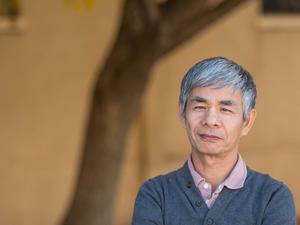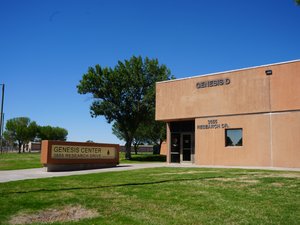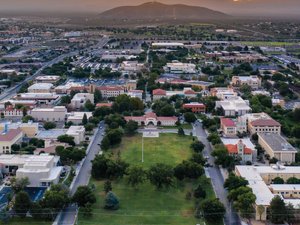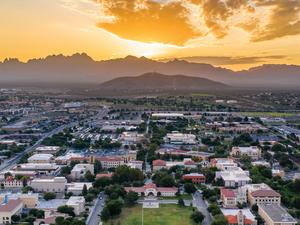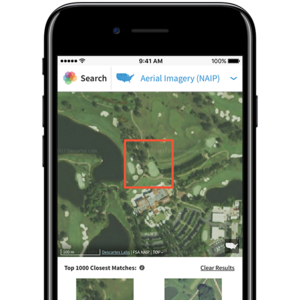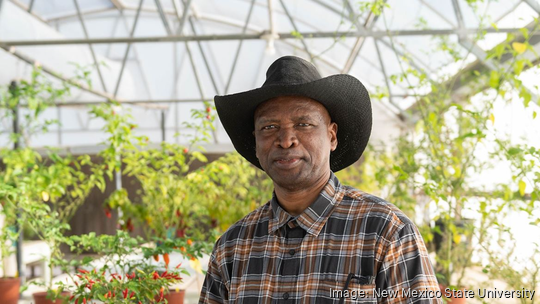
A $6 million U.S. Department of Agriculture grant will spur research led by a New Mexico State University professor that could help keep a range of crops — including chiles grown throughout Southern New Mexico — safe from harmful pathogens.
Soum Sanogo, Ph.D., a professor of fungal plant pathology at New Mexico State University (NMSU), is leading the grant-backed research team. That team includes researchers from other institutions across the United States including the University of Illinois, the University of Florida, the University of Arizona and Texas A&M University.
Other NMSU faculty are collaborating on the research, as well, including Ram Acharya from the Department of Agricultural Economics and Agricultural Business.
Acharya's involvement links to the potential impact Sanogo's research could have on New Mexico's famous chile industry. Essentially, Sanogo and other researchers from across the country are delving into various risk factors — like soil health, moisture levels and fungal resistance — that affect a plant's response to different pathogens.
Namely, the researchers are looking into a type of plant disease called phytophthora blight, which is caused by the phytophthora fungus. It affects a range of high-value crops, Sanogo said, including chile peppers.
Economic problems like growing labor costs and market competition have seen a dip in New Mexico's chile production in recent years. Disease could be another factor, Sanogo said.
That's because soil conditions and irrigation techniques used for chile growing between Las Cruces and Hatch — a Southern New Mexico city known as the "chile capital of the world" — make conditions ripe for fungal pathogens, including phytophthora.
"It has affected the industry to the point that the New Mexico Chile Association … has been sponsoring this for years, before we even got this [U.S. Department of Agriculture] grant," Sanogo said. "They've been sponsoring many aspects over the years, including the New Mexico Chile Commission. Not only me but other people working on not only pathology but horticultural aspects of the chile, as well."
Sanogo's research will hope to show chile growers the most effective ways to prevent their crops from becoming blighted with the fungal pathogen. He said Acharya, the economist on Sanogo's research team, will run economic analyses "to see if our suggestion actually has economic benefit to producers in New Mexico."
But chile isn't the only crop that could benefit from Sanogo's research. Pumpkins, tomatoes and watermelons are examples of other vegetables and fruits that are susceptible to rapid wilting and death at the hands of the pathogen.
That's why Sanogo is working with researchers at universities in different parts of the country, where those various crops are more prevalent. While Sanogo may focus on phytophthora's impact on chiles in New Mexico, researchers at the University of Illinois may look into its effect on pumpkins, or those at the University of Florida may analyze its effect on watermelons, he said.
Sanogo applied for the Department of Agriculture grant and came up with the general idea for the research, assigning different contributors to different aspects based on their expertise. NMSU is the grantee and will disperse the money to the different researchers as subcontractors, he said.
Originally from the Ivory Coast, which is a small country on the west coast of Africa, Sanogo came to the U.S. through a scholarship and completed his master's and doctoral studies at The Pennsylvania State University. He came to NMSU in 2002 to be able to both conduct research and teach students, something he said wouldn't have been as accessible at other institutions.
"When you do research, you pretty much just focus on your research," Sanogo said. "But when you're teaching, it will force you to not only master what you're researching but also be able to broaden into other areas. … I like the teaching challenge because I think it keeps you on the track of learning.
"My philosophy of life, I've been telling students, is about learning — lifetime learning," he continued. "I find in teaching a pathway to that."
